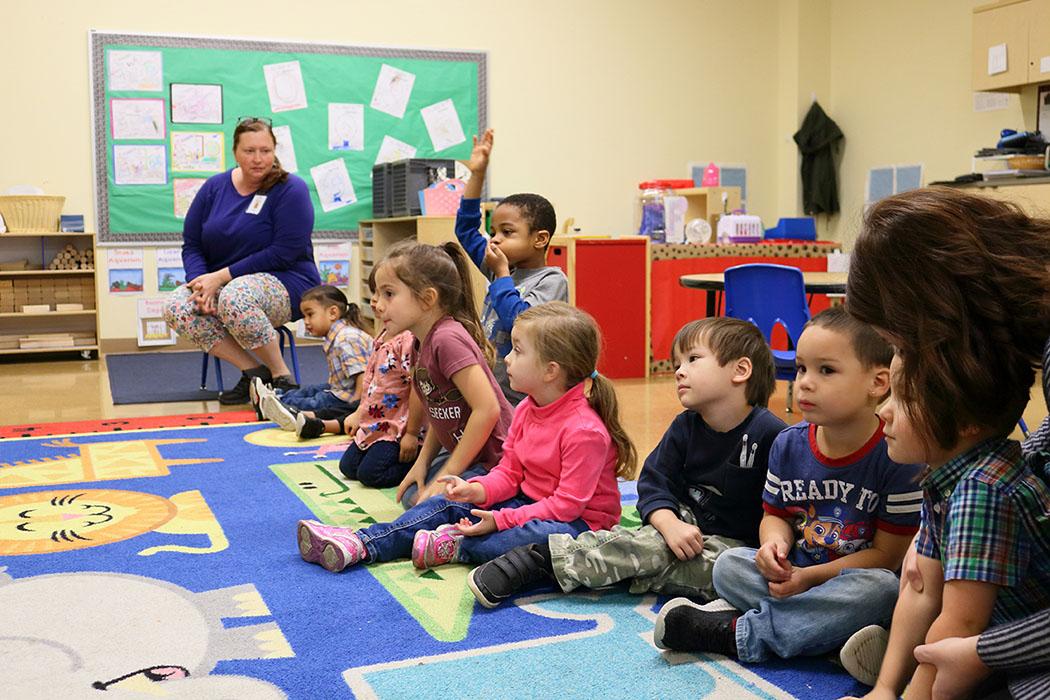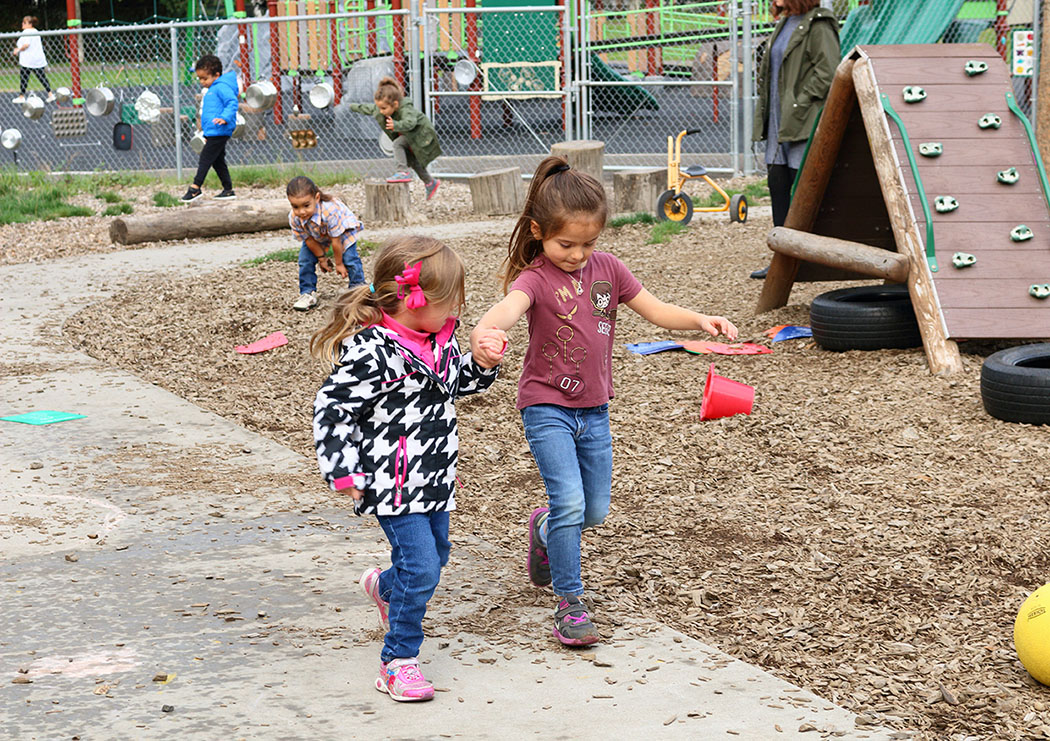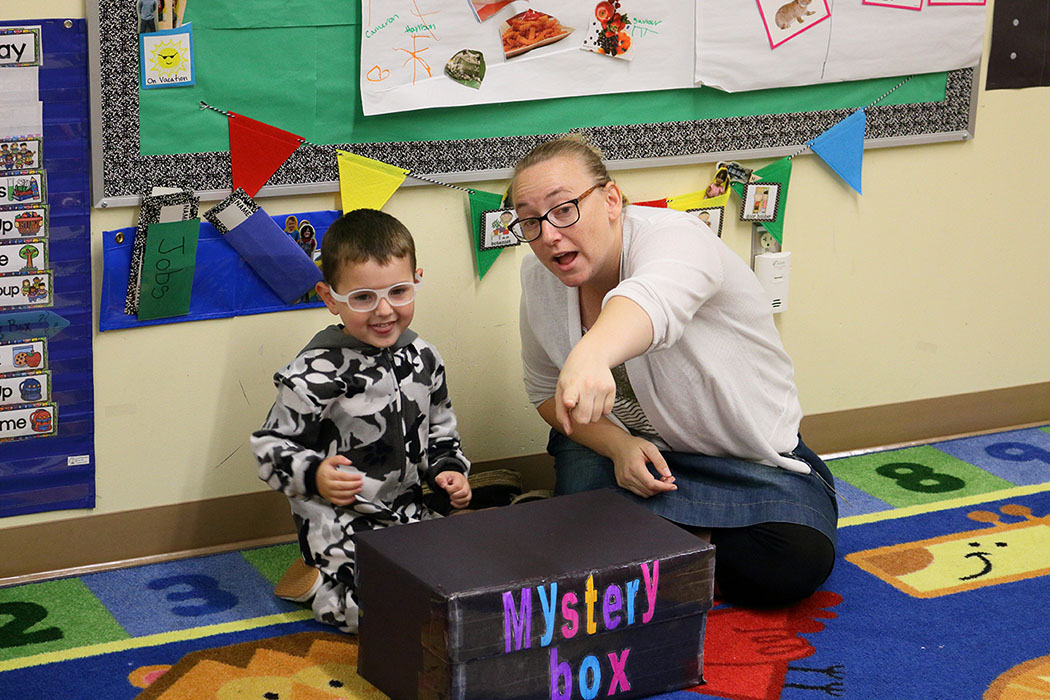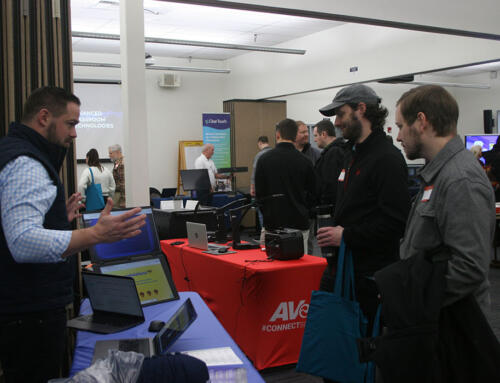ESD 112 is once again embarking on groundbreaking work as it incorporates preschool inclusion practices into more of its classrooms. Already known for operating the largest community-run child care system in the U.S., ESD 112 was recently granted new funds by Washington State’s Office of the Superintendent of Public Instruction (OSPI) as part of an initiative specifically designed to bring general education and special education preschool students together and to improve all outcomes for students across Washington.
Hough Early Learning Center (ELC) in Vancouver is one of a handful* ELCs in the ESD 112 region that has adopted a preschool inclusion framework into one of their classrooms. To begin incorporating this new framework, ESD 112 has partnered with Vancouver Public Schools to staff the classroom with general education and special education teachers from the district.
“I love this program because all of the kids are benefitting from it,” said Stefani Johnson, a teacher in the preschool inclusion classroom at Hough. “The special education students look to their typically developing peers as role models, and we hold all of our students to the same expectations, so they’re all learning together.”
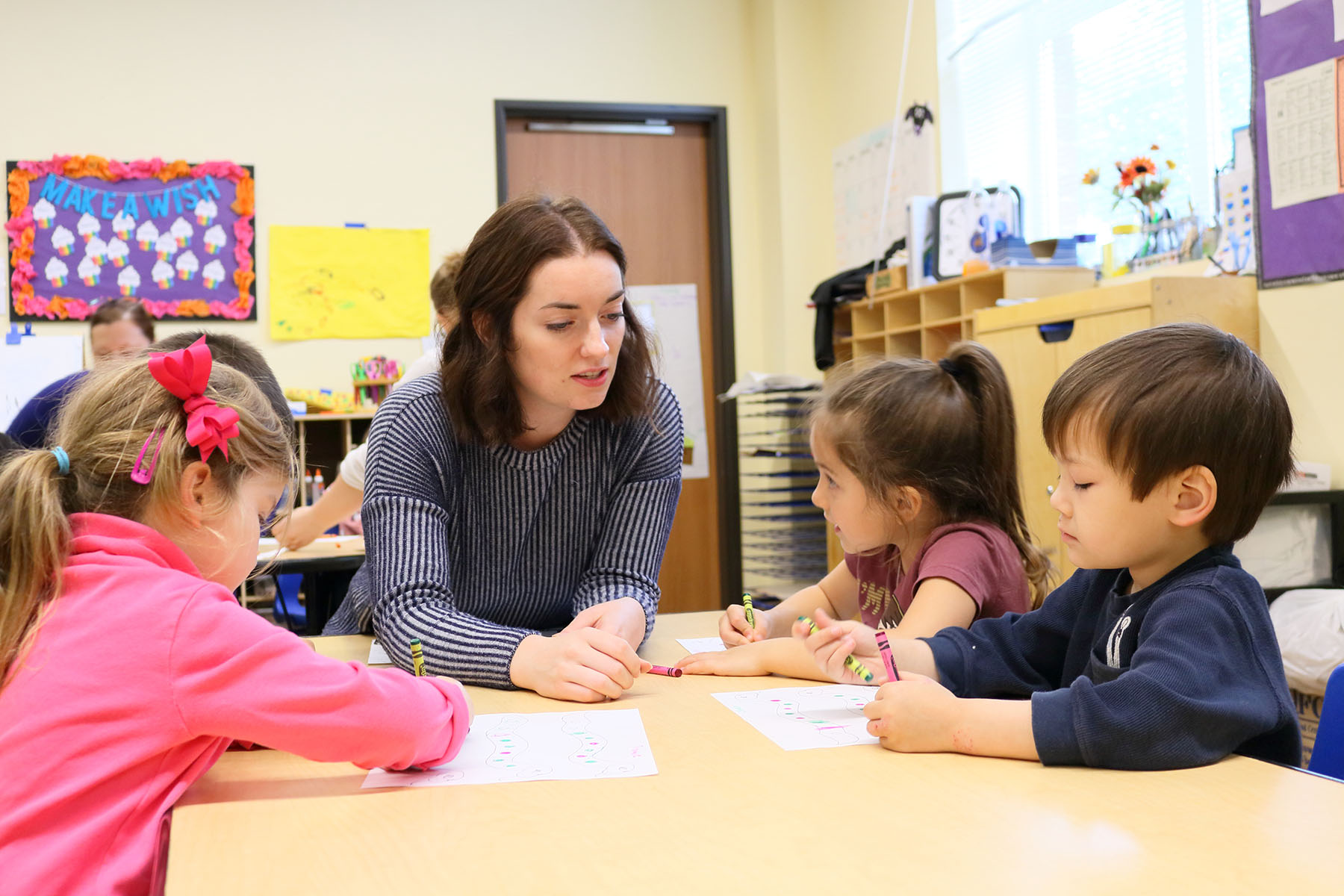
All students learn together in an integrated environment.
Evidence continues to mount that this model of preschool education helps not only special education students, but their general education peers, too. Typically developing students benefit by becoming role models for their peers. They also develop more positive attitudes towards diversity of population and are more likely to initiate friendships with and assist individuals who have varied needs and qualities. Special education students find ways of connecting with their peers and their environment in ways they can’t learn if they are kept in a separate learning environment.
Heather Anderson is a center director at Hough ELC. She worked at Hough when it first opened in 2015, then was transferred to another center for a couple of years. She returned to Hough as one of its two directors this fall. She says it’s been a bit like coming home.
“The focus on inclusion at Hough is what really sets this center apart from the others,” Anderson said. “It’s what made me so excited to come back to work for this center as its director, and I’m excited to see the incredible work our teachers are doing in the preschool inclusion classroom. We’re really making a difference.”
The funding provided by OSPI is being used to implement the Learning Experiences and Alternative Program for Preschoolers and Their Parents (LEAP) model at Hough. LEAP was originally established in 1981 to provide students with autism greater supports within the public education system by co-mingling their educational experiences with that of their general education peers. The model has since been expanded to include students with a variety of developmental disabilities, not just those with autism.
The LEAP model requires that teachers institute a buddy system for all students. This means pairing a special education student with a typically developing peer for the duration of the school year and encouraging them to work and play together. As a result, the buddies learn to communicate with and trust one another, and both are able to broaden their social skills and develop self-confidence. Anderson says she’s seen firsthand how impactful the “buddy system” can be.
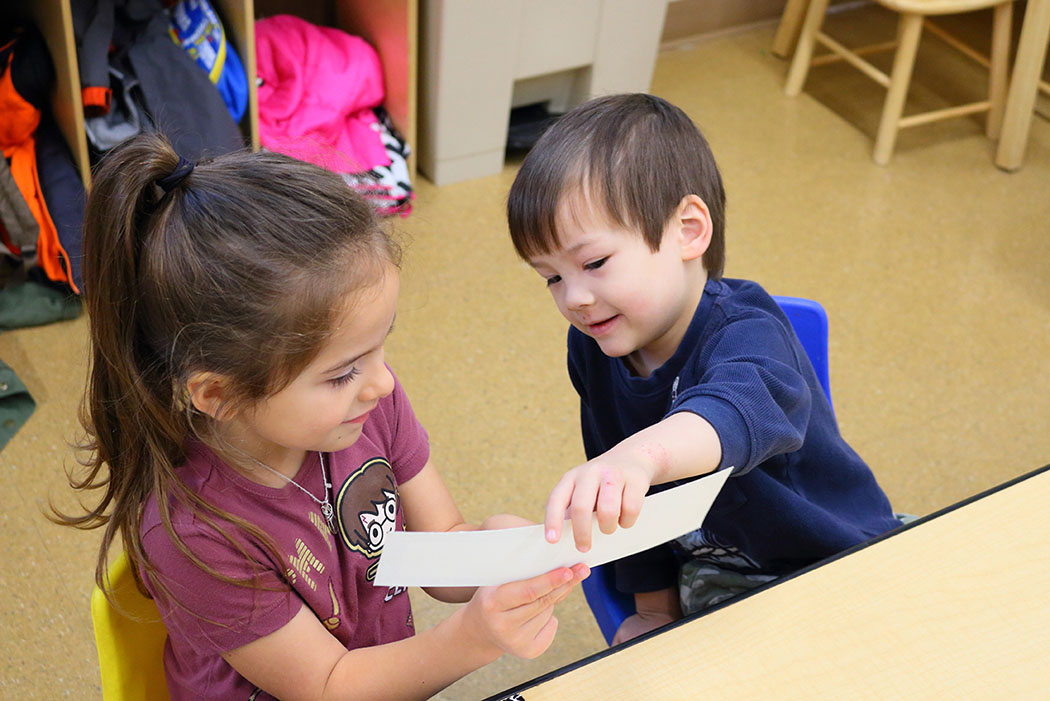
Buddies work together to learn new skills while developing self-confidence and trust.
“We have one student who has historically had a hard time connecting emotionally with others and usually prefers not to be touched,” said Anderson. “Recently, he hugged his buddy, which was a huge step for him. His mom teared up when we told her; she felt it was really monumental for her child to be connecting with his buddy in this way.”
Hough ELC piloted its first preschool inclusion classroom beginning in 2015. In its early days, the morning session was filled with traditional state-funded ECEAP (Early Childhood Education and Assistance Program) students, and the afternoon session was a blended classroom with general and special education students. Since then, the program at Hough has expanded to two classes, one in the morning and one in the afternoon, both serving 18 students each.
Research is beginning to indicate that children who enter school on an Individualized Education Program (IEP) and are placed in an inclusive preschool classroom are more likely to experience a decrease in their need for special education services over time. In many cases, these special education students are eventually able to be fully reintegrated into the general education setting, all thanks to the early intervention of the preschool inclusion classroom.
“What’s really incredible is that we’ve actually seen a decrease over time in the number of students needing an IEP to attend school,” said Anderson. “We know this program is working, and we’re only just getting started.”
*The other ELCs in the ESD 112 region that currently have active preschool inclusion classrooms are Kalama, Lincoln, Park Crest, Ocean Beach, and White Salmon Early Learning Centers.

